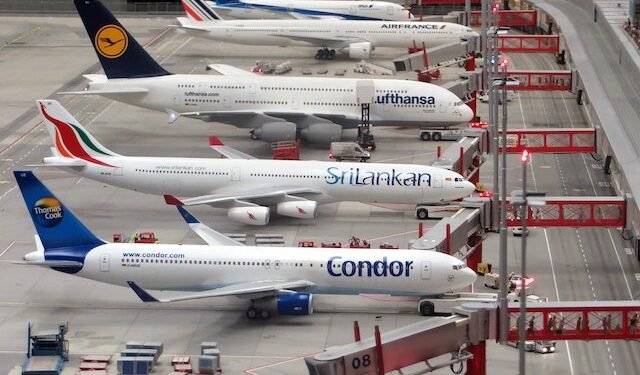What is an Aircraft Pushback Tug?

In the world of aviation, ground operations play a vital role in ensuring the safe and efficient movement of aircraft on the tarmac. One crucial piece of equipment used in ground handling is the aircraft pushback tug. A pushback tug is a specialized vehicle designed to move aircraft away from the gate and position them for taxiing. They help to increase safety on the tarmac. This blog explores the functions, components, and significance of aircraft pushback tugs in the aviation industry.
1. The Role of an Aircraft Pushback Tug: Moving Aircraft Safely
The primary function of an airport tug is to push an aircraft backward from the gate to enable it to taxi safely. Before an aircraft can begin its journey on the runway, it needs to be turned around and positioned facing the correct direction. This maneuver is crucial for safe and efficient taxiing, as well as avoiding obstacles and other aircraft on the apron.
Aircraft pushback tugs are meticulously engineered to handle the size and weight of different aircraft. They are equipped with powerful engines and traction systems to provide the necessary force for moving large aircraft. Ground personnel, known as pushback operators, use the tug’s control system to steer and push the aircraft, following strict protocols and safety guidelines.
2. Components of an Aircraft Pushback Tug: Power and Control
A typical aircraft pushback tug consists of several essential components that work together to perform the pushback operation. The core of the tug is its engine, which generates the power needed to move the aircraft. The engine is often a heavy-duty diesel engine, as it requires sufficient torque to handle the aircraft’s weight. The pushback tug’s control system is another critical component. It allows the pushback operator to steer the tug and regulate the speed and direction of the pushback.
Many modern tugs feature ergonomic and user-friendly control panels, making the operation more efficient and intuitive for the operators. The tug is equipped with safety features, such as brakes and warning systems, to ensure the pushback process is carried out with utmost safety and precision. The brakes help maintain control during the pushback and provide stability when the tug is stationary. Warning systems, including lights and sounds, alert ground personnel of any potential hazards during the pushback procedure.
3. Pushback Techniques: Tailored to Aircraft Type
Aircraft pushback tugs are designed to accommodate various aircraft types, from regional jets to wide-body airliners. Different aircraft have distinct wheel configurations, weights, and turning radii, requiring specialized pushback techniques. For narrow-body aircraft with a single-axle main landing gear, the tug operator typically connects the tug’s tow bar to the aircraft’s nose landing gear.
In contrast, wide-body aircraft with multiple landing gear axles may require a tow bar connected to the aircraft’s body near the main landing gear. Aircraft with a steerable nose wheel can be pushed back using either a tow bar connected to the nose landing gear or by pushing the aircraft from its nose or tail. Each pushback technique is tailored to the specific aircraft type to ensure a smooth and precise maneuver.
4. The Advantages of Aircraft Pushback Tugs: Efficiency and Safety
The utilization of aircraft pushback tugs offers several advantages to the aviation industry. One of the primary benefits is increased efficiency in ground operations. Pushing an aircraft away from the gate using a tug is faster and more controlled than relying on the aircraft’s engines for taxiing. This efficiency allows airlines to optimize their gate turnaround times, reducing delays and improving overall flight schedules. Pushback tugs contribute to enhanced safety on the apron and taxiways.
Trained pushback operators ensure that aircraft are maneuvered safely and precisely, minimizing the risk of collisions and damage to aircraft and ground infrastructure. The use of pushback tugs also reduces fuel consumption during taxiing. Instead of relying solely on the aircraft’s engines for taxiing, which consumes considerable fuel, aircraft can be pushed back to the taxiway, where they can then start their engines for taxiing to the runway.
Conclusion
In the bustling world of aviation, aircraft pushback tugs play a crucial role in ensuring safe and efficient ground operations. These specialized vehicles move aircraft away from the gate. They position planes of all sizes for taxiing and takeoff. With powerful engines, precise control systems, and adherence to safety protocols, pushback tugs enable aircraft to navigate the tarmac smoothly and safely. The components and techniques employed in aircraft pushback tugs are tailored to different aircraft types, accommodating the diverse needs of the aviation industry. By employing pushback tugs, airlines can optimize their ground operations, reduce delays, and enhance safety on the apron and taxiways.






